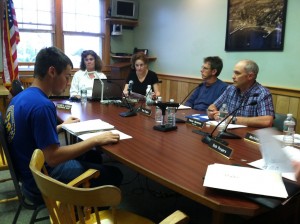Who are the people who get up early on the 4th of July to make their way to Mattapoisett so they can run five miles? When most of us are relaxing or gearing up for the annual cookout, approximately 1,000 runners are heading to Shipyard Park. There is no typical runner. An equal number of men and women run. Some have lots of running experience; some not so much. And age is just a number for these runners. Meet some of these long-time runners.
Last year, Joe Fernandez ran his 18th race and was the oldest runner. According to Mr. Fernandez, he finds the Mattapoisett Road Race “well run” (no pun intended) and the route “picturesque.” However, he may not run this year because he will be 85. For those who were wondering about the cut-off age, it just might be 84. In 1972, a new division was added for “aging runners” over 26. Apparently the Race Committee hadn’t met someone like Joe Fernandez.
When Patrick Callahan ran in the 39th Road Race, he was doing something he had first done 28 years earlier at the age of eight. In 2007, 40- year old George Luke won the race by out distancing many younger men. Marge Belisle, at 52, outran the younger women in the same race to win the women’s division.
Last year, the oldest female runner, Cathy Martens, said her favorite race memory was the year she won her division (women over 70) and didn’t know she won until she saw it in the paper the next morning. Although her “weak knees and even weaker constitution” require walking the five miles now, she enjoys every minute of it. She races with a friend and they talk the whole way. According to Mrs. Martens “it is amazing how many problems you can solve, how many laughs you can have, and how fast you can walk as you talk.” She would love to see many more “mature” runners/walkers participate. As she said “it is a great way to spend an hour or two.” For many of us, it would probably be more like three or four hours. But as Mrs. Martens said, “It is a great way to support the community.”
For Peter Martin, who will be running his 36th straight race this year, the race is “synonymous” with summer. Over the years he has had siblings, cousins and his own children run the race. Karen Manning, a 20-year member of the Race Committee, has run the race for 30 years. Mrs. Manning said the most striking quality is the “ever-present enthusiasm” that pervades every aspect of the race. From Race Committee meetings to registration where past races are discussed to the laughter shared with spectators along the route, this sense of joy and “spirit of the 4th shines brightly.” The Mattapoisett Road Race is truly a race for everyone.

